The past few months have been crazy. I had the final six chapters of my book to draft. And I had a thesis to write.
Tag: local food
Deer: Part of every stew, every salad, every stir-fry
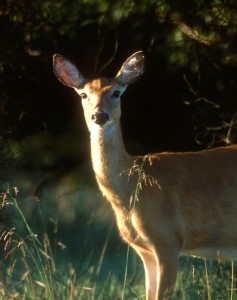
Venison, a forester friend tells me, is the best way he knows to eat trees. He points out that whitetails do a dandy job of converting cellulose into protein.
When Cath and I sit down to a bowl of venison stew, we are eating more than potato, carrot, and deer. We are also eating maple seedlings and cedar twigs. We are eating clover from a nearby meadow and corn from the edge of a farm field. We might even be eating hosta leaves and daylily buds from our own flower gardens.
If we lived thirty miles south of here, the whitetails—and thus we—we would be eating many more acorns.
If we lived where soy crops were common, they and we would be eating many more soybeans. (Given deer’s fondness for soy, I think it’s fair to consider Illinois venison a highly metabolized form of tofu.)
In a sense, though, the flip side is also true.
In my latter days as a vegan, I was shocked to learn how many whitetails are killed by farmers. Considering that deer were being shot to bring us tofu, how vegetarian were our stir-fries? Considering that they were even being shot to bring us greens and strawberries from the organic farm just down the road, how vegetarian were any of our meals?
I was also fascinated to learn about the role that agriculture played in the politics of early deer management.
Take Vermont, for instance: In 1897, when the state legislature allowed deer hunting for the first time in three decades, the move was made largely in response to farmers’ complaints about crop losses as the nearly exterminated whitetail began to recover. Up through 1920, the regulation of deer hunting in Vermont—for both bucks and does—was largely determined by agricultural interests and was aimed at keeping deer numbers low.
By 1920, though, hunting was becoming popular. The political tide had begun to turn and the Vermont legislature established bucks-only regulations that allowed the whitetail population to grow.
As a vegan, I could have argued that hunters themselves created the present situation—in which the successful cultivation of just about every American crop depends on killing deer. I could have pointed out that deer would still be scarce today if farmers had had their way.
But what would I have been advocating for? More intensive hunting in the past, to relieve me of a moral quandary in the present?
No matter how I sliced it, deer would always accompany me at the dinner table.
Note: I got thinking about this post after reading a recent piece by Al Cambronne, wherein I learned one more thing I didn’t want to know about the U.S. beef industry. If chicken droppings don’t strike you as a taste treat, you might not want to know either.
© 2011 Tovar Cerulli
Adult-onset hunting: Know the signs
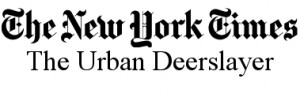 Experts have not yet determined whether Adult-Onset Hunting™ (AOH) is an epidemic. What they do know is that thousands of people are afflicted.
Experts have not yet determined whether Adult-Onset Hunting™ (AOH) is an epidemic. What they do know is that thousands of people are afflicted.
 More than a year ago, it was known—and reported in a widely read New York Times article—that a growing number of U.S. citizens had the condition. According to a recent article in Toronto’s National Post, a number of Canadian citizens have contracted it as well. The geographic epicenter is unknown. Though early reports suggested that AOH is most commonly contracted in cities, recent research indicates that it is even more virulent in rural areas.
More than a year ago, it was known—and reported in a widely read New York Times article—that a growing number of U.S. citizens had the condition. According to a recent article in Toronto’s National Post, a number of Canadian citizens have contracted it as well. The geographic epicenter is unknown. Though early reports suggested that AOH is most commonly contracted in cities, recent research indicates that it is even more virulent in rural areas.
Experts suspect that AOH may have lain dormant in the American psyche for generations, feeding off 19th-century stories about Daniel Boone.
 The most recent outbreak appears to be a mutation, triggered in part by widespread interest in knowing more about one’s food sources than is psychologically healthy. One pathological example often cited by both experts and adult-onset hunters is journalist Michael Pollan’s twin desires to visit cattle feedlots and to shoot a wild pig.
The most recent outbreak appears to be a mutation, triggered in part by widespread interest in knowing more about one’s food sources than is psychologically healthy. One pathological example often cited by both experts and adult-onset hunters is journalist Michael Pollan’s twin desires to visit cattle feedlots and to shoot a wild pig.
When fully developed, the primary symptoms of AOH are unmistakable: an otherwise normal, heretofore-non-hunting adult repeatedly goes to woods, fields, or marshes with a deadly implement in hand, intent on killing a wild animal.
Other potential symptoms include (1) a feeling of connection to nature, to one’s food, and to one’s hunter-gatherer ancestors, and (2) a re-calibration of one’s beliefs about hunting. Previous beliefs may suffer from atrophy, seizures, and even death, especially when an anti-hunter contracts AOH.
Knowing the early warning signs may protect you or a loved one from the worst effects. These early signs include:
- Excessive reading about the production of industrial food, especially factory meat.
- Esophageal spasms upon learning that the average pound of supermarket ground chuck contains meat from several dozen animals slaughtered in five different states.
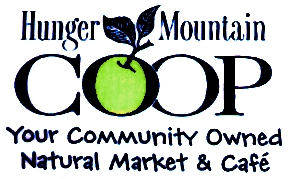 Sudden bouts of wondering why the local food co-op—with its cooler full of local, organic, free-range meats—doesn’t sell hunting licenses.
Sudden bouts of wondering why the local food co-op—with its cooler full of local, organic, free-range meats—doesn’t sell hunting licenses.- Compulsive eating of “real food” purchased directly from farmers.
- Recurrent realizations that farmers are killing deer and woodchucks to keep organic greens on your plate.
- Impaired ability to find meaning in chicken nuggets or tofu dogs.
- Insistence on a literal reading of Woody Allen’s dictum “Nature is like an enormous restaurant.”
- An uncharacteristic compulsion to initiate dinner conversation about firearms.
- Impaired ability to see humans as separate from the rest of nature.
- Repeated contact with real, live hunters (experts suspect that AOH is highly contagious, though transmission mechanisms are not yet fully understood).
Early diagnosis is problematic, as other potential warning signs include interests in hiking, gardening, fishing, mushroom hunting, raising chickens, cooking, and eating. Even vegetarianism can be a precursor condition, particularly if your acupuncturist has recommended that you add animal protein to your diet.
Alarmingly, growing up in a non-hunting or anti-hunting family does not guarantee immunity.
Experts have begun searching for a genetic marker indicating a predisposition for AOH. Until an accurate test is available, researchers recommend following these guidelines:
- If you or someone you know exhibits 0-3 of the above signs, the risk of adult-onset hunting may be low. You are urged to watch for further symptoms.
- If 4-6 of the above signs are present, immediate action is required to prevent a full-blown case of AOH. Recommended precautions include (A) obstinate refusal to think about where one’s food comes from, especially any meat consumed, and (B) at least one-half hour per day of reading about how humans are, in fact, extraterrestrials.
- If 7-10 of the above signs are exhibited, adult-onset hunting is already entrenched. Primary symptoms will begin to appear in a matter of weeks. Sign up for a hunter education course as soon as possible and find a hunter willing to show you the ropes.
There is no known cure.
© 2011 Tovar Cerulli
Venison: Lean, clean, and (no longer) lead-fortified
I disposed of the lead fragment and picked through the rest of the venison carefully. I hoped none of my bullets would ever come apart like that again.
Zen and the art of deer hunting
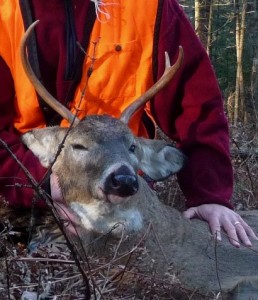 Don’t try too hard, some folks say. Desperation can drive the deer away. The less you expect, the more animals you see.
Don’t try too hard, some folks say. Desperation can drive the deer away. The less you expect, the more animals you see.
How this philosophy dovetails with the undeniable value of perseverance, I’m not sure. But there may be something to it.
In my first few years as a hunter, I dragged home exactly zero pounds of venison. It was only in my fourth autumn—after I gave up on getting a deer and decided to focus on just enjoying my time in the woods—that my first buck came along.
The next year, I had no expectation of repeated success so soon. Yet a deer came. The year after that, with less time to hunt, my expectations were even lower. Again, a deer came.
There are limits to such luck, however.
This fall, I would be too busy to spend much time in the woods. (Of late, I’ve been too busy even to spend much time in the wilds of the internet. As fellow bloggers can attest, my forays there have left few traces in the form of comments.) I felt sure our freezer would hold no venison this winter. But I promised myself I would get out for a few mornings, just to feel the forest wake at dawn.
A week ago, on opening morning of rifle season, I was doing just that. I had reached the woods a full hour before sunrise: half an hour before legal shooting light.
In the dark, I heard one deer somewhere behind me, its hooves crunching leaves. But its meandering, start-and-stop movements sounded more like a doe browsing than a buck seeking a mate. Here in Vermont, only the latter are legal game in rifle season. Slowly, the animal wandered out of earshot. Probably the only deer I would hear that morning.
No matter. My aim, as meditation teachers say, was to “just sit.” And, as woodland deer hunters say when the leaves are that dry and frosty, to “just listen.”
The rustle of a leaf.
The swishing of wings, as a pileated woodpecker moved from one tree to another.
The sounds of the forest breathing.
I can’t recall ever taking so much pleasure in simply sitting, eyes closed. My mind went still, letting go of its churning thoughts about the next chapter I would be drafting for my book, or about the research I’m doing in grad school, interviewing hunters who came to the pursuit as adults. I was hardly even thinking about deer.
I had been there an hour, listening, when the hoof steps came, moving not into the faint breeze, but with it, so that the animal’s scent was carried my way, rather than vice versa. Again, the sounds stopped and started.
A doe, I thought, maybe the same one.
But when the deer stepped into view, just ten yards off to my right and behind me, I saw antler. And—more surprising—I made out a pair of points on one side. A legal buck.
I saw, too, why the animal’s movements sounded sporadic. The buck was so hopped up on rut-time hormones that he could hardly take a step without stopping to hook a sapling with his antlers or to paw at the earth.
A few more steps, as the buck crossed behind me. An ambling turn that would take him away, yet gave me the chance to raise my rifle unseen. A clear view as he angled off. A moment’s pressure on the trigger.
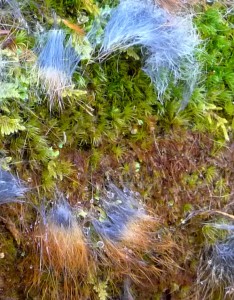 Crouching beside him, I offered thanks and apology—poor compensation for what I had taken—and thought how strange this brief hunt had been. In years past, I had never even seen a buck on opening day.
Crouching beside him, I offered thanks and apology—poor compensation for what I had taken—and thought how strange this brief hunt had been. In years past, I had never even seen a buck on opening day.
The next morning, returning scraps to the forest, I paused by a pair of crisscrossed logs. The moss was festooned with clumps of fine, downy fuzz. Puzzled, I leaned over to look more closely.
Red squirrel. The ephemeral traces of another, winged, hunter’s kill.
© 2010 Tovar Cerulli
An accidental trophy
Even with the leaves damp and quiet, I heard the buck coming. And even through the branches and brush, I saw enough antler to know he was no off-limits spikehorn.
When he stepped around the big hemlock twenty yards away, my rifle was up.
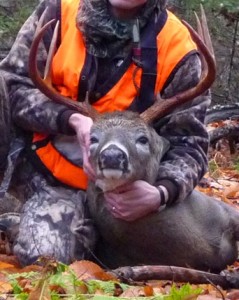 In the periphery of my mind, the antlers registered: maybe six points, probably a little bigger than the five-pointer I had shot some fifty yards from here, the year before.
In the periphery of my mind, the antlers registered: maybe six points, probably a little bigger than the five-pointer I had shot some fifty yards from here, the year before.
But I wasn’t watching his head. I was watching his body, looking for a clean shot at heart and lungs. And I was simply thinking “legal deer.”
I had seen a couple of does in archery season and would have killed one if I’d had a good opportunity. Now, in rifle season, the only legal game was a buck with forked antlers. I wouldn’t get to the woods many more times. If I wanted to bring home venison this year, this buck might be my last chance.
When he came around the hemlock, he kept walking. I prefer to shoot at a still target. And there was something about the angle I didn’t like, his chest almost directly toward me—technically a fine shot with a firearm, but it didn’t feel right. Then he slowed and turned. He was nearly broadside when I squeezed the trigger.
As he staggered and went down—my bullet through his heart—the thought occurred to me: He was big.
As a vegan and staunch anti-hunter, I had seen trophy hunting as the lowest of the low. Animals shot for their antlers? Living beings reduced to measurable possessions? Kills competitively compared by size? Yuck.
Later, as I began exploring the philosophical terrain of hunting, I realized that hunters kill big animals for a variety of reasons. Some are, indeed, fixated on possession and competition, sometimes not even wanting the meat. Some seek out older, bigger, wilier animals to challenge themselves as hunters. Some, like my uncle, welcome the occasional large animal as an unexpected gift.
I realized, in short, that when I saw a pickup going down the road with a big, dead deer in back, I had no real idea who was behind the wheel or what his or her motives were.
When I reached the fallen buck, I was shocked: eight points, four on each side, spreading half again as wide as the five-pointer from the year before. Bits of bark and wood were ground into the base of the antlers, from rubbing against trees.
The buck was heavy. Even with help from a friend, he dragged hard. At the check-in station two miles down the road—a simple scale behind a convenience store—the field-dressed deer weighed in at over 190 pounds. In some parts of North America, that’s not an impressively large whitetail. Here, it is.
Now I was the guy behind the wheel of the pickup with the big, dead deer in back. Now I was the guy being congratulated by strangers, their admiration for the magnificent animal displaced to me. I shook my head and shrugged.
“I just got lucky,” I told them. I wasn’t out to bag a big buck. Just legal venison.
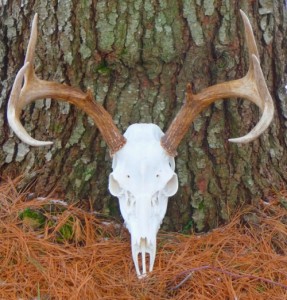 Yet I did keep the skull and antlers: As things of stark beauty. As a reminder of that hunt. As a reminder of the biggest deer I ever expect—or feel any need—to kill.
Yet I did keep the skull and antlers: As things of stark beauty. As a reminder of that hunt. As a reminder of the biggest deer I ever expect—or feel any need—to kill.
And, the night after the kill, as I drifted off to sleep, I did wonder: What would it feel like to catch even a fleeting glimpse of the massive buck some hunters swear they’ve seen roaming these hills, the one whose shed antlers people say they’ve found, seven or more points on a single side? Would I kill such an animal, or would I simply stare in awe?
© 2010 Tovar Cerulli
Blueberries and venison: The gift of wild foods
Cath and I looked at the ground in surprise.
We had visited this rocky hilltop many times. It was here, some eight years earlier, that I had asked her to marry me.
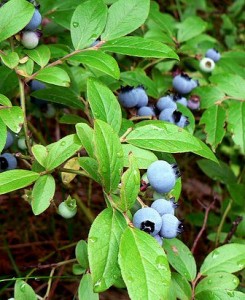
We had often seen these low bushes clinging to the meager soil. We had never seen them fruiting.
The patch of green leaves at our feet was speckled with clusters of dusty blue. We picked a few ripe berries and savored their sweetness, then picked a few more, dropping them into a plastic grocery bag I happened to have in my fanny pack.
Soon we realized that the entire southern side of the hilltop was thick with blueberries. Thrilled by the unexpected bounty, we loaded the grocery bag with nearly two quarts, hardly making a dent.
But no measure of volume can gauge what we gathered that morning.
From farming done by others, we get the bulk of our calories and nutrition: fruits, vegetables, grains, chickens, and more. From our own gardening, we get a smaller portion of our food—greens, peas, beans, carrots, squash, and the like—plus an invaluable sense of involvement and connection.
From wild food, we get something else.
Whether unsought and unforeseen like that bagful of blueberries, or hunted and hoped for like the chanterelles I seek in the summer woods or the deer who steps out from behind a tree twenty yards from where I crouch in autumn, wild food is not something grown or owned, bought or sold.
It is something given. Something that feeds soul as much as body. A reminder of our oldest, humblest way of eating.
Unlike the hunted animal, remarks Bob Kimber in Living Wild and Domestic, “The animal raised and slaughtered is not a gift. We have earned that food in a different way, and when we eat that animal, we are not accepting a gift as much as we are exercising our property rights.”
To blueberry bush or fallen deer, I am not master, standing over that which is rightfully mine, but supplicant, on my knees, hand outstretched.
© 2010 Tovar Cerulli
